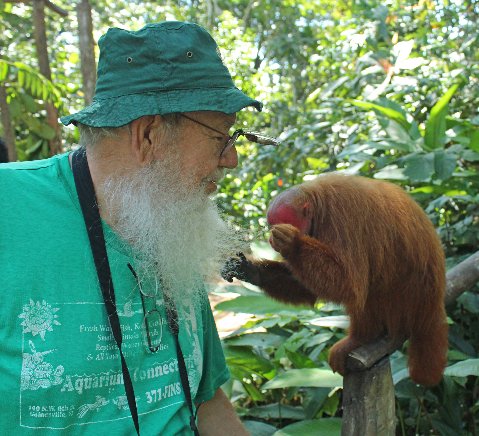"Got one, Patti."
"Good. A copperhead?"
"No. A crayfish."
"Oh."
I didn't know why she sounded so disillusioned. After all, it was wanting to see a crayfish, the firebacked crayfish to be exact, that had drawn us to the Apalachicola National Forest. The copperhead (a southern copperhead,
Agkistrodon c. contortrix) was to have been a secondary prize.

But now, with the beautiful crayfish--one of several species, the natural color of which is similar to a well-boiled Maine lobster, found and photographed, it was copperhead time.
Our plan was to follow and check both leaf-strewn, sun-patched, banks of the meandering ravine-stream in hopes of seeing one of these well-camouflaged snakes.
That was our plan. But the copperheads had plans of their own. Their plans, it seemed, contrary to the norm, were to make things as easy as possible for we bumbling humans.
And their plan superseded ours. Barely 2 steps out of the stream we found the first copperhead stretched across one of the few open patches. And although we only needed one for photos, about 10 steps farther, lying quietly in a tight coil, was a second copperhead. Success.
Our next stop would be on the Chipola River in hopes of finding a map turtle. But that's another story.
An adult Liberty County, Florida southern copperhead.

Firebacked crayfish.

 Author, photographer, and columnist Richard Bartlett is one of the most prolific writers on herpetological subjects in the 20th century. With hundreds of books and articles to their credit, Richard and his wife Pat have spent over four decades documenting reptiles both in the field and in captivity. For a list of their current titles, please visit their page in our bookstore. Author, photographer, and columnist Richard Bartlett is one of the most prolific writers on herpetological subjects in the 20th century. With hundreds of books and articles to their credit, Richard and his wife Pat have spent over four decades documenting reptiles both in the field and in captivity. For a list of their current titles, please visit their page in our bookstore. |




To prevent automated Bots from commentspamming, please enter the string you see in the image below in the appropriate input box. Your comment will only be submitted if the strings match. Please ensure that your browser supports and accepts cookies, or your comment cannot be verified correctly.